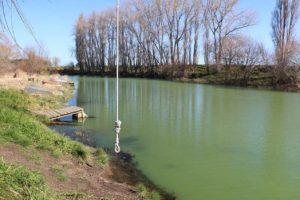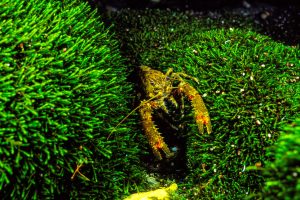Lifeline for our Longfin Eels
Guest Bloggers: Mike Joy, a Senior Lecturer in Environmental Science at Massey University & Masters student Amber McEwan
Of all our threatened endemic iconic species there is only one that almost all New Zealanders have come in contact with. Our other threatened species are on offshore islands or in very hard to access places, seen only by a select few. But this one, can, or at least could until very recently be found literally in many people’s back yards or within walking distance, it was accessible to almost everyone. This beautiful and enigmatic natural treasure is under immediate threat from a very small group of people with the active collusion of a government department.
Our longfin eel is on the verge of extinction, driven to this brink by the multitude of impacts on our freshwaters from deforestation, pollution from farming, urban and industrial wastewater and damming of rivers. But the final (and totally avoidable) pressure that is pushing them over the edge is commercial fishing. Bizarrely, this threatened endemic species is being fished to extinction under the “management” of our Ministry of Fisheries. This economically insignificant industry is putting at risk the birthright of all New Zealanders, supplying eels to a market that exists solely because other countries have fished their own native eels to near extinction.
All the signs are very bad for longfin eels, and recent research makes for particulary grim reading:
- The number of juveniles arriving at our streams from where they spawn in the ocean has dropped by 75%
- The average size captured has dropped every year since commercial fishing started
- Regularly fished rivers in the South Island now have male eels outnumbering females by 100 to 1 because the females are larger so are taken first.
Not a single commercial quota has ever been met. Due to eels’ incredibly long lives and the fact that they breed only once at the end of them, we are essentially “fishing in a bucket” – decimating a population that is not replenishing itself.
Unlike all other threatened species, there is an easy solution here – just stop commercial eel fishing. No current commercial fisheries model can manage an already heavily decimated species that breeds only once at the end of a long life. Eels should be harvested on a recreational basis only – like Trout. The trout fishery was designated recreational only in order to prevent over-harvesting and as such, is one of the most sustainable fisheries in the world.
In recent years the Ministry of Fisheries has spent hundreds of thousands of dollars on meetings, research & staff time on this problematic fishery – close to the same amount that eel export revenue generates for less than 100 people employed in the eel fishery, most of them on a part time basis. It’s time for the Ministry to take action and admit what we are all waking up to these days – that some things just don’t last forever.


